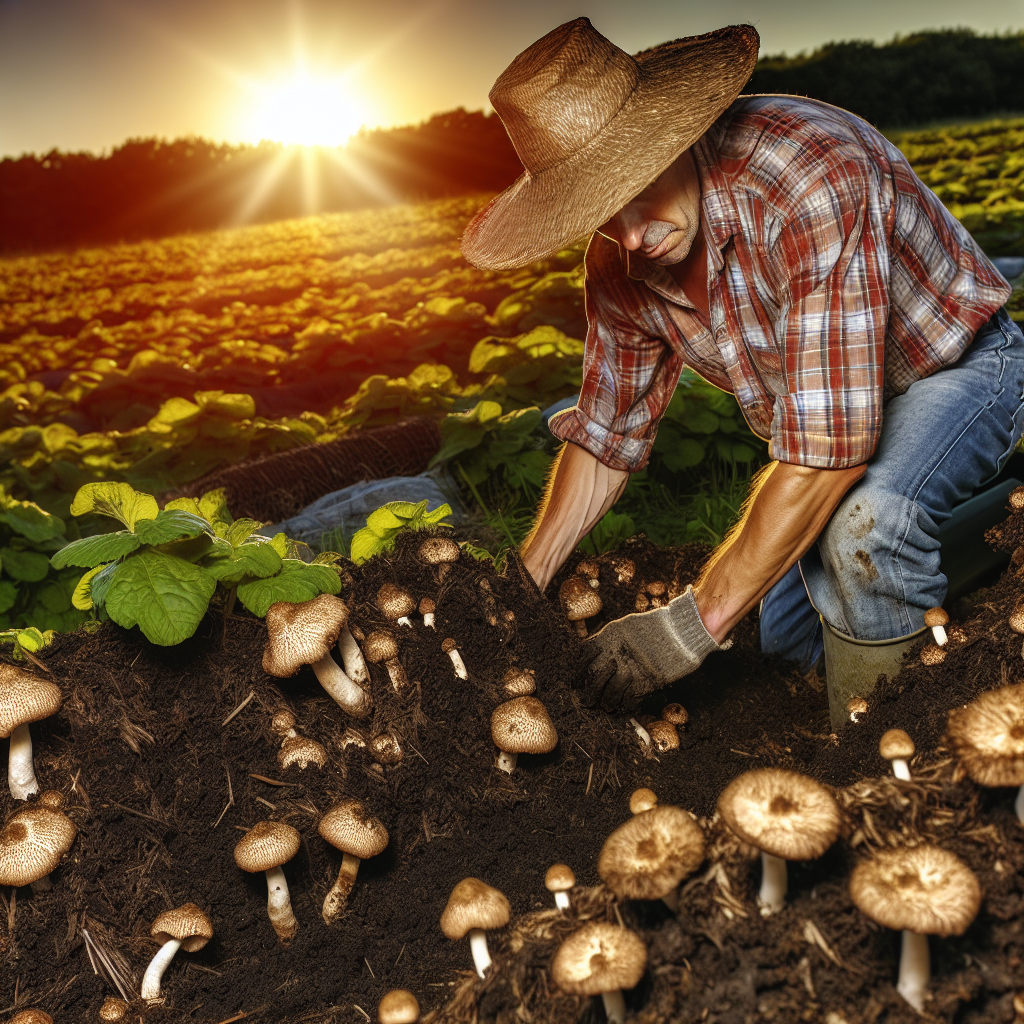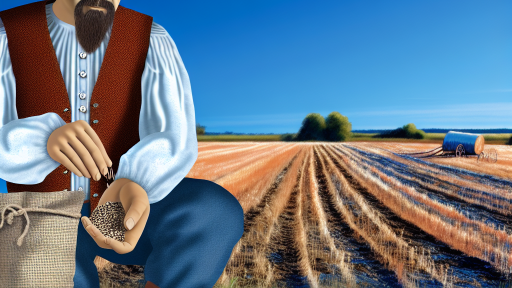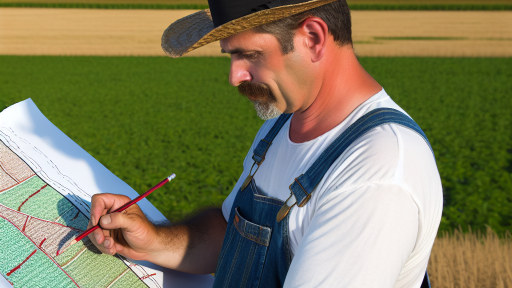Overview of Mushroom Farming
What is Mushroom Farming?
Mushroom farming involves cultivating edible fungi for food.
This method can be profitably done on small farms.
It requires specific techniques and environmental conditions.
Types of Mushrooms Suitable for Small Farms
Several varieties suit beginner farmers.
- Oyster mushrooms are easy to grow and have a quick turnaround.
- Shiitake mushrooms offer robust flavors and culinary versatility.
- Button mushrooms are among the most popular and widely consumed.
Basic Requirements for Successful Farming
Successful mushroom farming needs careful planning and setup.
First, consider the growth medium.
Common options include straw, sawdust, or compost.
Next, ensure optimal climate conditions.
Mushrooms generally thrive in dark, humid environments.
Essential Tools and Equipment
To get started, gather the necessary equipment.
- Containers or bags for growing media are essential.
- A thermometer helps monitor temperature conditions.
- Humidity tents can help maintain moisture levels.
Potential Challenges in Mushroom Farming
All farming comes with its unique challenges.
Pests and diseases can threaten your crops.
It is crucial to regularly inspect and maintain your growing environment.
Additionally, fluctuations in humidity and temperature may affect yield.
Finding Market Opportunities
Identifying your target market helps ensure profitability.
Transform Your Agribusiness
Unlock your farm's potential with expert advice tailored to your needs. Get actionable steps that drive real results.
Get StartedConsider local farmers’ markets as sales outlets.
Restaurants also often seek fresh ingredients like mushrooms.
Online platforms can broaden your reach to potential customers.
Types of Mushrooms Suitable for Small Farms
Introduction to Mushroom Varieties
Mushroom farming can be an exciting venture for small farms.
Identifying suitable mushroom types is crucial for success.
Each variety has specific growth requirements and market demands.
Common Edible Mushrooms
Button mushrooms are a popular choice among farmers.
They thrive in a variety of substrates and are easy to grow.
Next, oyster mushrooms are favored for their rapid growth rate.
Their delicate flavor makes them appealing in many cuisines.
Shiitake mushrooms also rank high among gourmet options.
They require a specific type of wood for optimal growth.
Specialty Mushrooms to Consider
Enoki mushrooms are increasingly popular for their unique appearance.
They grow well in cooler temperatures, which can be advantageous.
Another interesting option is the lion’s mane mushroom.
Known for its medicinal benefits, it is gaining popularity.
Lastly, maitake mushrooms offer unique flavors and health benefits.
Growing Conditions and Requirements
Each type of mushroom has distinct growing conditions.
Temperature, humidity, and light are key factors to consider.
Button mushrooms prefer cooler temperatures around 60°F.
Oysters thrive at slightly warmer temperatures of 70°F.
Shiitake mushrooms need wood logs with high moisture content.
Market Demand and Profitability
Understanding market trends is essential for mushroom farming.
Button mushrooms dominate the market due to their versatility.
Showcase Your Farming Business
Publish your professional farming services profile on our blog for a one-time fee of $200 and reach a dedicated audience of farmers and agribusiness owners.
Publish Your ProfileOyster mushrooms are increasingly sought after by chefs.
Specialty mushrooms can yield higher profits due to their niche markets.
Cultivation Techniques
Proper cultivation techniques significantly affect yield.
Begin with sterilizing substrates to prevent contamination.
Use the right inoculation methods for a successful start.
Throughout growth, maintain humidity and temperature levels.
Selecting the Best Mushrooms for Your Farm
Exploring various mushroom types helps determine the best choice for your farm.
Consider local market preferences when making your selection.
Experimenting with different varieties can enhance profitability.
Essential Equipment and Supplies for Beginner Mushroom Farmers
Growing Medium
The growing medium serves as the foundation for mushroom cultivation.
You can use several types, including straw, sawdust, or compost.
Choose a medium that suits your target mushroom species.
For instance, Shiitake mushrooms thrive in hardwood sawdust.
Conversely, Oyster mushrooms grow well on straw or coffee grounds.
Spawn
Mushroom spawn is the equivalent of seeds for plants.
It contains the mycelium needed for mushroom growth.
Select high-quality spawn from reputable suppliers.
Common names to consider include Fungi Perfecti and MycoSupply.
Using reliable spawn ensures consistent results.
Containers and Bags
Containers and bags are necessary for holding your growing medium.
Use breathable plastic bags for efficient air exchange.
Consider using tubs or trays for larger batches.
You can also use jars for small-scale operations.
Make sure to sterilize containers before use.
Humidity and Temperature Control
Mushrooms require specific humidity and temperature levels.
Invest in a humidity monitor to track moisture levels.
A portable humidifier can help maintain high humidity.
Additionally, a thermometer ensures ideal temperature conditions.
Some mushrooms prefer cooler environments, while others thrive in warmth.
Lighting
Mushrooms generally do not require direct sunlight.
However, they benefit from indirect light during growth.
Using fluorescent or LED lights can mimic natural conditions.
Ensure lighting duration meets the needs of the specific species.
Tools and Equipment
Some basic tools will simplify your farming tasks.
You will need a sterilization pot for preparing growing medium.
A pasteurization thermometer will help track temperature.
Use sharp knives or scissors for clean cuts during harvest.
Consider gloves to maintain hygiene and prevent contamination.
Harvesting Supplies
Harvesting mushrooms requires proper equipment.
Use baskets or containers to collect them efficiently.
Showcase Your Farming Business
Publish your professional farming services profile on our blog for a one-time fee of $200 and reach a dedicated audience of farmers and agribusiness owners.
Publish Your ProfileLabel each collection to keep track of different types.
A scale can help ensure you have the right weight and yield.
Cleaning Supplies
Maintaining a clean environment is vital for mushroom production.
Invest in disinfectants that are safe for agricultural use.
Have brushes and cloths ready for equipment maintenance.
Regular cleaning prevents pests and contamination.
Implement a cleaning schedule to keep everything organized.
See Related Content: Maximizing Crop Yields With Container Gardening
Step-by-Step Guide to Setting Up a Mushroom Growing Space
Choosing the Right Location
Select a suitable space for mushroom farming.
Ensure the area is cool, dark, and humid.
Basements or unused rooms work well.
Make sure the location is free from pests.
Gathering Necessary Supplies
Collect all materials before starting.
You will need mushroom spawn and substrate.
Common substrates include straw or sawdust.
Don’t forget about containers for growing.
Preparing the Substrate
First, sterilize your chosen substrate.
This step prevents unwanted contaminants.
Use boiling water or steam to sterilize effectively.
Let the substrate cool before inoculating.
Inoculating the Substrate
Mix the mushroom spawn into the cooled substrate.
Ensure even distribution for the best growth.
Use gloves to maintain cleanliness during this process.
Place the mixture into growing containers after mixing.
Creating the Ideal Environment
Control temperature and humidity effectively.
The ideal temperature ranges between 60°F and 75°F.
Maintain humidity levels around 85% to 95% for optimal growth.
Moisture can be added by misting the area regularly.
Monitoring Growth Progress
Check the growing containers regularly.
Look for signs of mycelium spreading throughout the substrate.
Be patient; growth usually takes a few weeks.
Record your observations to refine your process.
Harvesting Mushrooms
Harvest mushrooms when they reach maturity.
Do this by twisting and pulling them gently.
Avoid cutting as it can harm the mycelium.
Always use clean hands to prevent contamination.
Post-Harvest Care
After harvesting, inspect the remaining substrate.
You may be able to grow additional flushes of mushrooms.
Maintain the same temperature and humidity conditions.
Continue to monitor and mist as necessary.
Showcase Your Farming Business
Publish your professional farming services profile on our blog for a one-time fee of $200 and reach a dedicated audience of farmers and agribusiness owners.
Publish Your ProfileSee Related Content: DIY Mushroom Growing Kits for Small-Scale Farmers
Cultivation Techniques: From Spawn to Harvest
Understanding Mushroom Spawn
Mushroom spawn serves as the initial inoculum for cultivation.
It contains mycelium, the vegetative part of fungi, and is crucial for growth.
Choose high-quality spawn for optimal results.
Common types include grain spawn and sawdust spawn.
Use grain spawn for a faster colonization process.
Sawdust spawn is suitable for shiitake mushrooms and others.
Preparing the Substrate
The substrate provides essential nutrients for the mushrooms.
Common substrates include straw, wood chips, and coffee grounds.
First, sterilize or pasteurize the substrate to eliminate harmful organisms.
Use a pressure cooker or steam method for sterilization.
Mix the spawn with the cooled substrate in a clean environment.
Inoculation Process
Inoculation involves introducing the spawn to the substrate.
Ensure the workspace is sanitized to prevent contamination.
Mix the spawn evenly throughout the substrate.
Transfer the mixture to containers or bags for growth.
Seal the containers properly to maintain humidity.
Incubation Phase
During incubation, keep the substrate in a warm, dark place.
Monitor temperature and humidity regularly for best results.
Mycelium will grow and colonize the substrate over time.
This process can take several weeks, depending on the mushroom type.
Fruiting Conditions
Once fully colonized, initiate fruiting conditions.
Expose the substrate to light, fresh air, and adjust humidity levels.
These changes signal the mycelium to produce fruiting bodies.
Mist the area regularly to maintain moisture.
Harvesting the Mushrooms
Harvest mushrooms when they reach maturity.
Look for a firm cap and a well-developed stem.
Cut them at the base to avoid damaging the mycelium.
Harvest regularly to encourage new growth.
Post-Harvest Care
After harvesting, inspect the remaining substrate.
Remove any dead mushrooms to prevent contamination.
Continue misting and maintaining appropriate conditions.
Watch for any signs of new growth after the harvest.
Uncover the Details: Climate Control Strategies for Mushroom Cultivation

Managing Environmental Conditions
Importance of Environmental Factors
Environmental conditions significantly influence mushroom growth.
Temperature, humidity, and light play crucial roles in this process.
Understanding these factors is essential for successful farming.
Temperature Control
Mushrooms thrive in specific temperature ranges.
Ideal temperatures vary by species, generally between 55°F to 75°F.
Use a thermometer to monitor temperatures regularly.
Showcase Your Farming Business
Publish your professional farming services profile on our blog for a one-time fee of $200 and reach a dedicated audience of farmers and agribusiness owners.
Publish Your ProfileConsider using heating or cooling systems as necessary.
Maintaining consistent temperatures encourages healthy growth.
Humidity Management
Humidity is vital for mushroom cultivation.
Most mushroom species require humidity levels of 85% to 90%.
Using a hygrometer can help monitor humidity accurately.
A misting system or humidifier maintains adequate moisture levels.
Excessive moisture, however, can lead to mold growth.
Light Requirements
Mushrooms require light, but not direct sunlight.
Indirect light or artificial lighting works best for growth.
Expose your mushrooms to light for about 12 hours a day.
This exposure promotes proper development and fruiting.
Adjust the light intensity based on the growth stage.
Creating an Optimal Environment
Consider creating designated growing areas or rooms.
Use materials that can help regulate temperature and humidity.
Insulating walls can reduce temperature fluctuations.
Ventilation is also vital to prevent stale air buildup.
Ensure fresh air circulation to support healthy mushrooms.
Monitoring and Adjusting Conditions
Regularly check your environmental conditions.
Make adjustments as necessary to optimize growth.
Document changes to analyze what works best over time.
Adaptability is key to successful mushroom farming.
See Related Content: Container Gardening For Urban Farming Success
Common Pests and Diseases in Mushroom Farming: Prevention and Control
Identifying Pests
Mushroom farming can attract various pests.
Some common pests include flies, mites, and nematodes.
Identifying these pests early is crucial for effective control.
Common Diseases
Mushrooms are susceptible to specific diseases.
These diseases include cobweb mold, fungal blotch, and bacterial blotch.
Monitoring for disease symptoms helps prevent their spread.
Prevention Strategies
Preventing pests and diseases requires good hygiene practices.
Start by keeping the growing area clean and organized.
Proper ventilation is essential to reduce humidity levels.
Using Biological Controls
Biological controls can be effective in pest management.
Consider introducing beneficial insects like predatory mites.
These can help control pests without harmful chemicals.
Cultural Practices
Implementing cultural practices supports pest and disease management.
Rotate mushroom crops to disrupt pest life cycles.
Use resistant mushroom strains when possible.
Monitoring and Management
Regular monitoring of crops is vital.
Check for signs of infestation or disease regularly.
If issues arise, act promptly to mitigate damage.
Showcase Your Farming Business
Publish your professional farming services profile on our blog for a one-time fee of $200 and reach a dedicated audience of farmers and agribusiness owners.
Publish Your ProfileChemical Controls
In some cases, chemical controls may be necessary.
Use inorganic pesticides responsibly and as a last resort.
Always follow label instructions for safe application.
Record Keeping
Maintain records of pest and disease occurrences.
This helps track patterns and improve management strategies.
Regular updates ensure proactive measures can be taken.
Marketing Your Mushrooms: Strategies for Small Farmers
Build a Unique Brand Identity
Creating a memorable brand is vital for your farm’s success.
Your brand should reflect your values and mission.
Consider using a catchy name that resonates with consumers.
Additionally, design a professional logo to enhance your visual presence.
Utilize Social Media Effectively
Social media platforms are powerful tools for reaching customers.
Create accounts on popular networks like Instagram and Facebook.
Share engaging content such as recipes and mushroom growth tips.
Moreover, interact with your audience through comments and direct messages.
Attend Local Farmers’ Markets
Farmers’ markets offer great exposure to local customers.
Set up a vibrant stall showcasing your mushrooms.
Offer samples to entice potential buyers and drive sales.
Furthermore, connect with other farmers and customers to build community.
Collaborate with Local Restaurants
Form partnerships with nearby restaurants to increase sales.
Provide chefs with fresh, high-quality mushrooms regularly.
In return, ask them to promote your farm on their menus.
This collaboration can lead to increased visibility for your brand.
Launch a Subscription Service
Consider starting a mushroom subscription service for regular customers.
Customers appreciate the convenience of home delivery.
Your service should offer different varieties and quantities.
Promote exclusive discounts for subscribers to encourage sign-ups.
Engage in Community Events
Participate in local food festivals and events to showcase your produce.
Offer workshops on mushroom growing and cooking techniques.
By doing this, you can educate consumers and build brand loyalty.
Community engagement creates positive word-of-mouth marketing.
Develop an Informative Website
A professional website can enhance your farm’s credibility.
Include details about mushroom varieties, growing methods, and availability.
Additionally, provide a blog with interesting articles on mushroom recipes.
Ensure customers can easily contact you for orders or questions.
Leverage Online Marketplaces
Consider selling through online marketplaces to reach a broader audience.
Sites like Etsy and local food hubs can connect you with buyers.
Optimize your product listings with high-quality images and descriptions.
This approach helps you tap into consumer demand beyond local sales.
Additional Resources
Where Do Truffles Grow? – Grit
Make Your Own DIY Organic Seedling Mix for Cheap — The Seed …
Showcase Your Farming Business
Publish your professional farming services profile on our blog for a one-time fee of $200 and reach a dedicated audience of farmers and agribusiness owners.
Publish Your Profile



